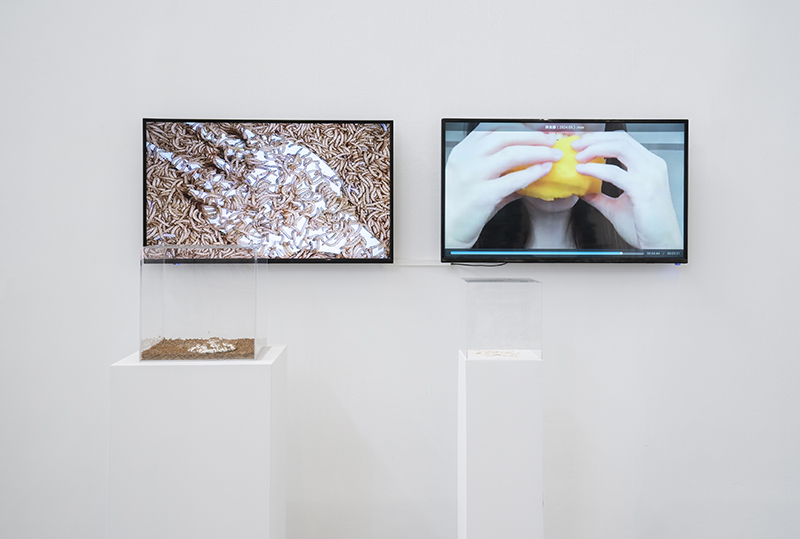 |
We are Insects |
||||||||||||||||||||||||||||||||||||||||||||||||||
|
Background: Polystyrene is durable and non-biodegradable, frequently used in disposable food containers, coffee cups, and as insulation in packaging materials, resulting in widespread and severe “white pollution” in soil, rivers, lakes, and oceans. Concept: In the science fiction novel The Three-Body Problem, humans feel like insects when confronted with the superior technology of the Trisolarans. However, the character Da Shi realizes from the history of locusts: “We are insects, but insects have never been defeated.” This realization is the origin of the work's title. Research: A research group led by Yang Jun from Beihang University, in collaboration with Senior Researcher Wu Weimin from Stanford University and Dr. Zhao Jiao from BGI Shenzhen, published two sister research papers in the authoritative journal Environmental Science and Technology, titled Biodegradation and Complete Mineralization of Polystyrene by Plastic-eating Larvae of the Mealworm (Tenebrio molitor): 1. Chemical and Physical Properties and Isotopic Depletion Experiments and Biodegradation and Complete Mineralization of Polystyrene by Plastic-eating Larvae of the Mealworm (Tenebrio molitor): 2. The Role of Gut Microorganisms. These papers, for the first time, provide comprehensive evidence that mealworms can biodegrade and completely mineralize polystyrene into carbon dioxide and assimilate it into their body fat, with the gut microbiota playing a leading role. They also isolated and identified a bacterium that degrades polystyrene. This research offers a novel perspective on addressing the environmental pollution caused by discarded plastics. The mealworm, also known as the flour beetle, with the Latin name Tenebrio molitor, typically grows to 20 -25mm in length, and the adult is a black beetle. It is a warehouse pest, originally from North America and now extensively bred artificially as animal feed or for the extraction of chemical raw materials. Experiments at Beihang University and Stanford University have shown that larvae from China and the United States both feed on plastic and can survive for over a month solely by consuming foam plastic, eventually developing into adult beetles. Polystyrene foam remains in the gut of mealworm larvae for less than 24 hours. After feeding on foam plastic for 16 days, the mealworms can convert about 48% of the polystyrene into carbon dioxide. Carbon-13 isotope tracing experiments have proven that mealworms completely degrade and mineralize polystyrene into carbon dioxide and assimilate it into their body fat. (Source: Beihang University website https://news.buaa.edu.cn/info/1006/30573.htm) Procedure: Utilizing 3D carving techniques, polystyrene foam is sculpted into the iconic form of a spacecraft from The Three-Body Problem. The mealworms are bred to consume the polystyrene foam sculpture, with time-lapse videography capturing their progress, which is then exhibited in video format. The desolated remains of the Three-Body spacecraft, post-consumption by the mealworms, are displayed within a glass enclosure. In addition, a short film, Pica, is curated from internet videos, highlighting peculiar individuals globally indulging in the act of consuming foreign objects such as glass and iron nails.
|
